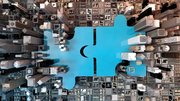News
Bank 'bills' it, hopes customers come to ATM
FleetBoston Financial has taken advantage of a new Web-enabled ATM platform to roll out bill payment on 75 of its machines. Bill payment gave Fleet an opportunity to leverage an already existing Internet application and also scored high in customer surveys.
July 24, 2003
When deciding which applications to offer to customers on its ATMs, FleetBoston Financial wasn't unduly influenced by the Electronic Payment Association's (NACHA) projection that consumers will pay at least a billion bills online in 2003.
Or by the Gartner Group's contention that the number of consumers paying bills online reached 25 million in 2002 and is growing by 35 percent a year.
Or by a Gomez Inc. study that found that folks who use their banks' online payment systems are more likely to increase their account balances and decrease the number of visits to branches and calls to bank representatives.
Jim D'Aprile, Fleet's vice president of Self Service/ATM Banking, said the bank simply asked its customers. When Fleet conducted a number of studies, including focus groups, to find out which ATM functionalities most interested its account holders, bill payment "rose to the top."
Bill payment is a popular feature among the one million users of Fleet's HomeLink online banking site, D'Aprile said. The service costs $4.50 a month, although it is free to some Fleet customers. It is also available to small business customers via Fleet's OfficeLink.
Bill payment offered an opportunity for Fleet to leverage an already existing, Web-based application at its new Windows-based ATMs. "You're not re-inventing the business logic. You're just developing a method to present it appropriately to the customer," D'Aprile said.
Missing the mouse
Creating an ATM-appropriate interface for Web applications is no easy task, however, since those applications are designed with a mouse in mind.
Fleet decided to let customers pay only one bill per ATM transaction, for instance. "We thought the confusion factor would be too great if they had the option of paying multiple bills in a single transaction," D'Aprile said. "We didn't want them paying the mortgage when they thought they were paying the Verizon bill."
Fleet also tweaked the size and spacing of screen options, so that it would be difficult for a customer to inadvertently select the wrong payee.
When a Fleet customer selects the "bill payment" option using the ATM touchscreen, the ATM retrieves a payee list for that customer from Fleet's internal server. The customer scrolls down until he finds the bill he wants to pay, touches "enter" and the money is debited from his Fleet account and remitted to the payee.
More on Fleet's ATM apps |
"The process works just the same as if the customer was sitting in front of his PC at home," D'Aprile said.
While the interface was designed to be more like a PC, with a navigation bar and the ability to open windows during transactions, D'Aprile said that Fleet found it couldn't stray too far from ATM tradition.
For instance, Fleet removed the "please insert card to begin" screen. "We assumed it was a given, but then we watched people wait and wait and wait. So we put it back," he said.
All of the machines run NCR's APTRA Edge software. A multi-vendor software strategy is a key for Fleet, whose network is about 60 percent NCR and 40 percent Dieboldfollowing its acquisition of BankBoston in 1999. It would be cost prohibitive to double the development costs for any new ATM application, D'Aprile said, and more difficult to maintain consistency of the user interface across vendors.
The first machines offering bill payment, all NCRs, were introduced in the New York metro area in 2002's third quarter. In March Fleet added a number of Diebold machines in Boston, for a total of 75 ATMs. D'Aprile said Fleet plans to double that number over the summer and eventually expand it to more of its 3,600 ATMs, after it gets a better sense of customer usage.
"We wanted to ensure that we had the opportunity to get real world feedback before we finalized the process," he said.
It will become easier to offer advanced applications as Fleet gradually upgrades or replaces its older ATMs, adding Windows-based operating systems, faster processors, more memory and parallel ports to servers, among other innovation-friendly features.
"We don't have plans to change every one of our ATMs right now, but every new ATM that goes in will have the new platform," D'Aprile said.
Fleet is marketing the bill payment service primarily through word-of-mouth and promotions at branches where it is offered. "We're not really pushing it at this point," D'Aprile said. "We must get enough of a presence where customers don't actively have to seek it out."
Included In This Story
Diebold Nixdorf
As a global technology leader and innovative services provider, Diebold Nixdorf delivers the solutions that enable financial institutions to improve efficiencies, protect assets and better serve consumers.














